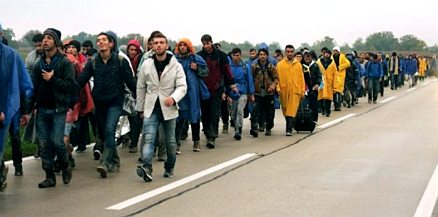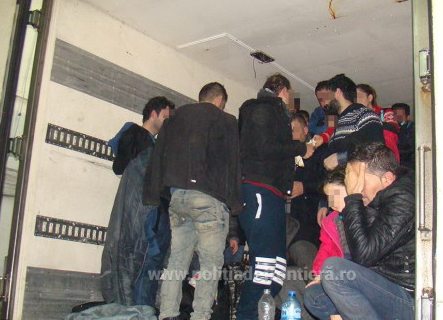The territory that is now called the Republic of Macedonia has had the misfortune to be treated as a geostrategic plaything by the Great Powers ever since it was wrested from the Turks more than a century ago. The latest machinations began after the breakup of Yugoslavia in the 1990s. On the one hand, the Western powers — the EU and the USA — seem determined to hand Macedonia over to its Albanian minority. On the other hand we have the Russians, who want to maintain solidarity with their Slavic cousins in the Balkans and prevent an unbroken chain of Islamic territory stretching from the Bosphorus to the border of Croatia.
The following essay discusses the Macedonian crisis in detail. The original German text was made available to Elisabeth Sabaditsch-Wolff, who asked JLH to translate it. It was also posted by the Wiener Akademikerbund. A shorter version may be found at Andreas Unterberger’s website.
Many thanks to JLH for the full translation.
Final Solution for the Macedonian Question?
The 15% Albanian minority is holding the Republic of Macedonia hostage.
by Dr. Harald W. Kotschky, in Skopje
March 21, 2017
Just imagine, if:
Carinthia, 2017: The small Slovenian minority is demanding that Slovenian be the second language for official matters and everyday discourse, including bilingual place names and street signs in the entire province. On pain of draconian legal penalty, the innkeeper in Mallnitz has to speak Slovenian with his guest from Globasnitz. The state name and the national anthem must be bilingual and the state flag must include a Slovenian symbol. For years now on festive occasions in mixed language areas, there have been no red-white-red flags on the streets and public and private buildings — only the Slovenian national flag. 50% of all officials, of the executive authorities, of the military command must come from the Slovenian population.
Does that seem absurd? Well, exactly that is happening, mutatis mutandis (just exchange “Slovenian” for “Albanian”) a mere thousand kilometers from Vienna, in the Republic of Macedonia.
Mass Demonstrations for an Undivided Macedonia
Fomented by the USA and its Brussels helpers — helpers who may justly be called “quasi-governors” on the basis of their years of intervention in the domestic affairs of this sovereign state — the years-long political crisis in the Balkan Republic of Macedonia is reaching a climax, and may result at any time in violent confrontations. The fuse is lit.
Based on the results of snap elections in December, 2016, the foreign provocateurs want to pressure the president into creating a ruling coalition drawn from the ethnic Macedonian Social Democratic Party and all the ethnic Albanian parties. This would be a decisive step toward splitting the multi-ethnic land along linguistic boundaries.
For three weeks, on a daily basis, around 150,000 persons from all social classes and all ethnic groups, regardless of political preferences — excepting Albanians — have been demonstrating in all the larger cities and towns, for an undivided Republic of Macedonia. Peacefully, in contrast to the Soros network-instigated hooligan-like demonstrations of last year, from which the damage to public buildings may still be seen.
Today alone, in the capitol city of Skopje, more than 50,000 persons were on the street. The initiatives emanating from a non-partisan committee of citizens, artists and intellectuals are ignored or distorted by the mainstream media.
2002 Potemkin Census
The roughly 2.2 million population of the small, landlocked state in the center of the Balkan Peninsula includes more than a half dozen ethnic groups, outside of the autochthons (54% ethnic Macedonians). The political landscape is laid out according to ethnic criteria.
The largest minority is the almost exclusively Muslim Albanians, whose clearly marked territory is in the northwest, along the borders of Albania and Kosovo. Over the centuries they have trickled in over the mountains from the Adriatic area. The greatest influx was after the Second World War, when many ethnic Albanians moved from Kosovo and southern Serbia to the more liberal Yugoslavian republic of Macedonia.
Their present number is debatable. 25% is proposed, but the 2002 poll on which this is based was shadowed by irregularities. First, there was its “Potemkin” aspect — villages known to be abandoned were suddenly replete with life. Albanians came en masse over the Kosovo border, moved from village to village and played “resident population.” Furthermore, there was a long wait for the results of the census, which suggests “adjusted” numbers. Ethnic Albanian politicians (with the support of the quasi-governors) have successfully opposed a new census since 2012. Because a properly achieved result would reveal that the Albanian minority does not reach 20% of the entire population, and this would mean the loss of granted privileges. The number of Albanian speakers could hardly exceed more than 15-16%, as is seen through extrapolation from documents of the social insurance bureau and passport authority.
Albanian Chauvinism — Biblical Leavening in the Land[1]
In the sense of the Huntington thesis[2], Macedonia is a classic “fault-line country” between two cultures — the Christian-Macedonian and the Islamic-Albanian. The significance of religious factors may be seen in the fact that the few Albanians who are willing to integrate into the majority society are almost exclusively from the Catholic or atheist (former Communist) environments.
Practically all other members of the Albanian minority in Macedonia have a twofold lack of allegiance to the state, and live in parallel societies. They see both their ethnic and national identity as Albanian and are inclined toward one of the two “motherlands” — Albania or Kosovo.
Continue reading →





